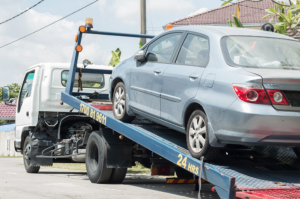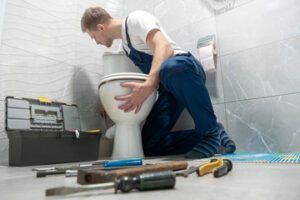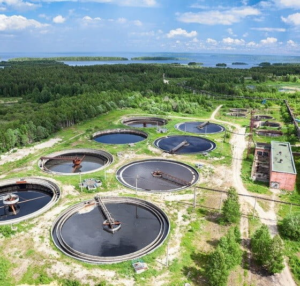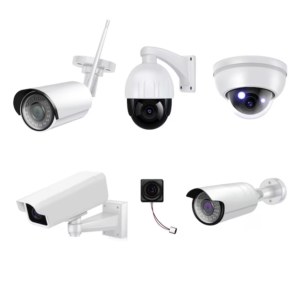Towing has its own lingo, but it’s easy to understand once you know the basics. It’s important to understand your GVWR and your towing capacity.
Towing strains your vehicle, so regular maintenance is even more important. Get regular oil changes, and make sure your tires are properly inflated. Also, make sure you’re using a trailer that is well-maintained. Contact Azteca Towing now!

Towing is the act of pulling another object behind you with a chain, rope, bar, hitch, or other means. Objects that are towed can include vehicles, boats, trailers, and even animals or humans. Towing is usually done by a professional, but can also be performed by someone with the right equipment and knowledge.
Towing companies are available 24/7 and can help with a variety of issues, including flat tires, dead batteries, or mechanical failures like engine problems. They also can assist with getting a vehicle back on the road after an accident or when it has been disabled by a roadside emergency. Many towing companies have special trucks that are designed for recovery services and can handle heavy-duty loads such as jackknifed semis or cars.
If you’re considering towing your car, you need to know your vehicle’s towing capacity. This is the amount of weight your vehicle can safely pull, and it can vary based on how much gear is installed, what kind of cargo you’re carrying, and your driving style. Exceeding your towing capacity can put you and others in danger, cause excessive wear on the engine and transmission, and shorten the life of your brakes.
Generally, the towing capacity of a vehicle is listed in its manual, but there’s no one-size-fits-all number. To calculate your vehicle’s towing capacity, you’ll need to know its dry weight (without any fluids), and its curb weight, which is the total weight of the vehicle with a full tank of gas.
If you’re towing a trailer, make sure to calculate its load weight as well. You’ll need to know the tongue weight of the trailer, which is its weight when coupled to the tow vehicle, and the gross trailer weight, which includes everything on the trailer including the braking system and fuel. Some trailers have a built-in surge brake system that activates when the towing vehicle slows down, and sway control devices which are similar to shock absorbers and help keep the trailer from swaying during travel. If you have a tandem axle trailer, you’ll need to know its axle weights as well.
How to Tow
When it comes to towing, there are a number of important things to keep in mind. First, it’s critical to have clear communication between the two drivers. This will help prevent confusion and accidents, as well as ensure that both drivers are following local laws and guidelines. In addition, it’s important to be aware of the limitations of each vehicle involved. This will help avoid damage and other issues that may arise during the towing process.
Once both vehicles are ready to go, the driver of the towing vehicle should start moving slowly. This will allow the tow strap to become taut before increasing speed. Similarly, the driver of the towed car should also drive slowly to prevent sudden strain or pressure on the strap.
Both drivers should make sure that their headlights are dipped. This will improve visibility and make it easier to see other vehicles and pedestrians. It’s also a good idea to put on the emergency brake on the towed vehicle, as this will help protect it from damage and potential collisions with other cars or objects.
After connecting the tow strap, both drivers should recheck the hooks and make sure that they are secure. Then, the towing driver should test the strength of the rope by pulling on it with their vehicle. If the tow strap is not strong enough, it should be replaced with a more durable option.
Other towing options include using a tow dolly or flat-bed trailer. These are both more expensive than traditional towing methods, but they can be more convenient and safer for long distances. Tow dollys can be attached to the hitch of the towing vehicle and are ideal for pulling a small, light-duty car. Flat-bed trailers are best for transporting large and/or heavy items.
If you’re unsure which towing option is best for your situation, it’s recommended to contact a professional towing service. They’ll be able to provide you with more information and assistance, including rates and 24-hour service. Additionally, a professional towing service will be able to offer advice and suggestions on how to tow your vehicle safely.
Safety Concerns
The towing process can be very dangerous if it’s not completed properly with the right equipment and experienced hands. In addition to the proper machinery, a towing truck needs to be in good condition with proper tires and brakes. Any defects in these areas could result in the vehicle crashing and possibly damaging other vehicles on the road. It’s also important to be familiar with the local laws regarding towing procedures and equipment, as you may need to follow them to avoid any fines.
Towing trucks need to be inspected regularly and kept up to date on maintenance. This will help reduce the risk of deadly accidents caused by mechanical failures. Drivers should know their towing equipment’s weight limits and never overload it. They should also keep extra fuel and emergency equipment on hand.
It’s also important for tow truck drivers to pay attention to their surroundings and stay aware of blind spots. They should use their mirrors effectively and always check behind them before changing lanes or passing another vehicle. They should also be careful when driving in bad weather, as conditions can change quickly and affect visibility.
Another risk associated with towing is that the vehicle being towed can roll off the back of the truck. This can happen if the driver doesn’t chock the wheels, or if a cable or chain breaks. In these cases, the towed vehicle can smash into the front of the towing truck.
Tow truck drivers should also wear personal protective equipment when working on federal roads, as they might encounter broken glass and other hazardous materials. They should also be sure to take breaks often and drink enough water, as dehydration can be dangerous. In addition, they should make sure to use sunscreen when working outdoors and have a shaded work area. High visibility clothing is also important, as it will increase their safety in work zones and during emergencies. Finally, they should always use radios or other reliable communication devices to communicate with other operators when maneuvering large trucks. This will prevent miscommunication and confusion.
Cost
The cost of a tow will vary widely depending on the circumstances. Most towing companies charge a “hook-up” or base fee, followed by a per-mile rate for the distance to be covered. This structure can be a bit confusing, particularly when comparing quotes from different companies. To help avoid sticker shock, it’s a good idea to ask about the exact price breakdown before hiring a company. For example, some companies include the first five to seven miles in the hook-up fee, while others do not.
The type of vehicle being towed can also have a major impact on the overall cost. Smaller vehicles tend to cost less than larger ones, such as trucks and SUVs. Additionally, vehicles that require a winching tow will typically cost more than those that can be hauled with a flatbed. In some cases, it’s possible to save money on a tow by having roadside assistance coverage, which is sometimes included as part of a car insurance policy or offered separately from the plan.
Other factors that can influence the cost of a tow include the time of day and whether the tow is needed in bad weather. For example, if you break down on a mountain road during a snowstorm and your truck must be winched to free the car, expect to pay a higher rate.
It’s important to know which factors will influence the cost of a Tow so that you can be prepared for potential unexpected costs. By understanding these factors, you can make smarter financial decisions about which services to use and how much to budget for them. With a little research and planning, you can rest easy knowing that you’ll be ready for any situation that comes your way on the road!




